
Eilean Donan is a small tidal island situated at the confluence of three sea lochs in the western Highlands of Scotland, about 1 kilometre from the village of Dornie. It is connected to the mainland by a footbridge that was installed early in the 20th century and is dominated by a picturesque castle that frequently appears in photographs, film and television. The island's original castle was built in the thirteenth century; it became a stronghold of the Clan Mackenzie and their allies, the Clan MacRae. However, in response to the Mackenzies' involvement in the Jacobite rebellions early in the 18th century, government ships destroyed the castle in 1719. The present-day castle is Lieutenant-Colonel John Macrae-Gilstrap's 20th-century reconstruction of the old castle.
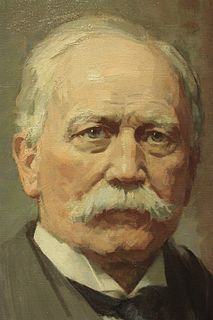
Sir Robert Rowand Anderson, was a Scottish Victorian architect. Anderson trained in the office of George Gilbert Scott in London before setting up his own practice in Edinburgh in 1860. During the 1860s his main work was small churches in the 'First Pointed' style that is characteristic of Scott's former assistants. By 1880 his practice was designing some of the most prestigious public and private buildings in Scotland.
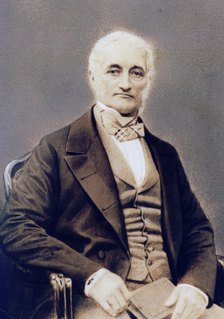
William Burn was a Scottish architect. He received major commissions from the age of 20 until his death at 81. He built in many styles and was a pioneer of the Scottish Baronial Revival.
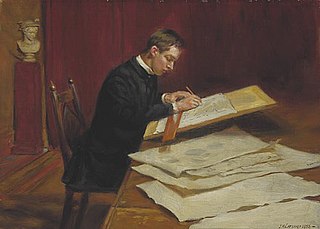
Sir Robert Stodart Lorimer, KBE was a prolific Scottish architect and furniture designer noted for his sensitive restorations of historic houses and castles, for new work in Scots Baronial and Gothic Revival styles, and for promotion of the Arts and Crafts movement.
Sir William Hardie Kininmonth was a Scottish architect whose work mixed a modern style with Scottish vernacular.

William Brodie was a Scottish sculptor, working in Edinburgh in the 19th century.
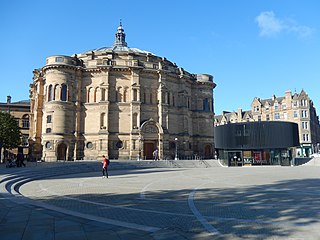
The McEwan Hall is the graduation hall of the University of Edinburgh, in Edinburgh, the capital of Scotland. It was presented to the University in 1897 by William McEwan, brewer and politician, at a cost of £115,000. Sir Robert Rowand Anderson was the architect. The McEwan Hall is a category A listed building.
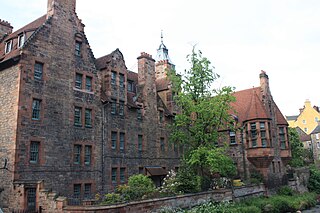
Arthur George Sydney Mitchell was a Scottish architect. He designed a large number of bank branches, country houses, churches and church halls. His most significant commissions include the housing developments at Well Court and Ramsay Garden, both in Edinburgh.

John Kinross was a Scottish architect. He was particularly skilled in traditional styles and was highly involved in the restoration of historic buildings, researching his subjects well before any project.
Lieutenant Colonel John MacRae-Gilstrap was a British army officer and a senior figure of the Clan Macrae. He contested a rival claim to the chiefship of the clan, and in 1912 he purchased and subsequently restored the Macrae stronghold of Eilean Donan Castle on Loch Duich in the west of Scotland.

Frank Lewis Worthington Simon was a British architect working in the Arts and Crafts style. In Scotland, he was sufficiently noteworthy as to be commissioned by Queen Victoria to remodel Balmoral Castle In later life he worked in Canada and is best remembered for the Manitoba Legislative Building.
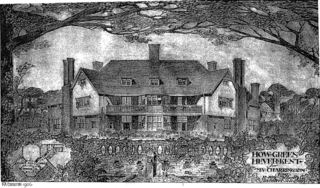
Robert Weir Schultz, later Robert Weir Schultz Weir and known as R. W. S. Weir, was a Scottish Arts and Crafts architect, artist, landscape designer and furniture designer. He did much work on the Isle of Bute. Almost all of his buildings are now category A listed buildings, reflecting the high quality of his work.
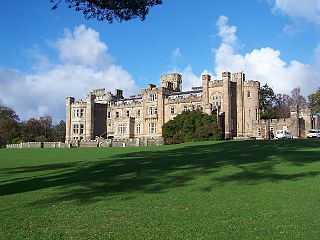
Francis William Deas was an influential Scottish Arts and Crafts architect and landscape designer in the late 19th century and first half of the 20th century. He was a keen amateur painter, largely of landscapes. His most important work was probably the restoration of Castle Toward.

William Thomas Oldrieve HRSA FRIBA was an English-born architect and scholar primarily associated with public buildings in his role as Architect for Scotland within the Office of Works. His predominant style would be termed "Edwardian Classic".

John Alexander Carfrae (1868–1947) was a Scottish architect of particular note in the field of innovative school design.
Alexander Lorne Campbell (1871–1944) was a Scottish architect, who practised across Scotland. He was founder of the successful firm of Scott & Campbell.
George Craig JP EGS (1852-1927) was a Scottish architect and amateur geologist. He created a very high proportion of the 19th century public buildings in Leith.
Robert Macfarlane Cameron RIBA DL (1860–1920) was a 19th/20th century Scottish architect, specialising first in public houses and later in cinemas.

James Graham Fairley FRIBA MSGS (1846–1934) was a 19th/20th century Scottish architect working mainly in the West Lothian area, specialising in churches and schools.

Alexander Ross FRIBA LLD was a 19th/20th century Scottish architect specialising in churches, especially for the Free Church of Scotland and the Scottish Episcopal Church. He was Provost of Inverness from 1889 to 1895.

















